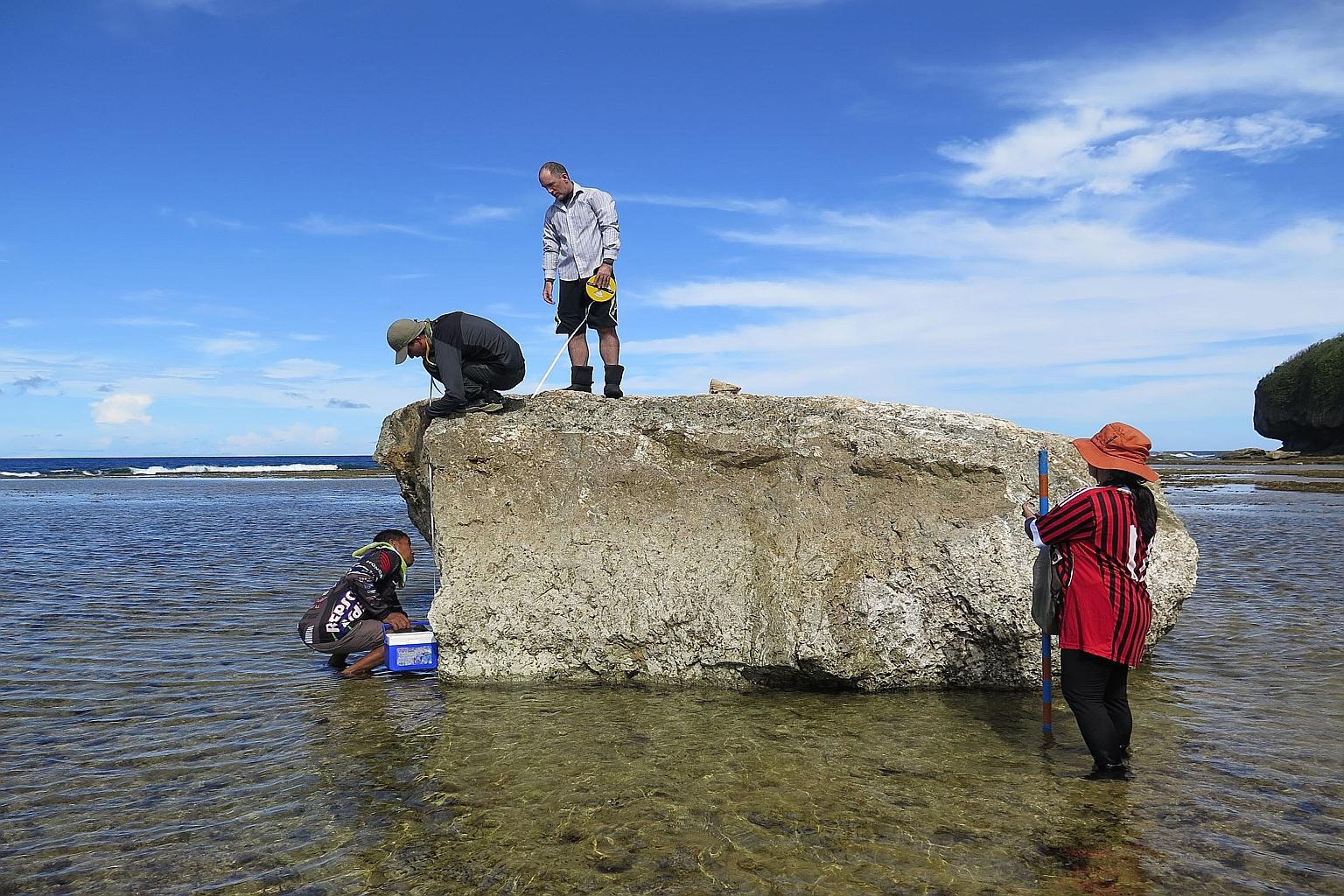Developing climate models for S-E Asia
Sign up now: Get ST's newsletters delivered to your inbox

Prof Adam Switzer (third from left) measuring reef boulders.
PHOTO: NTU
Carolyn Khew
Follow topic:
Scientists at the Earth Observatory of Singapore (EOS) are looking to better understand the impact of weather phenomena on Singapore, and want to develop climate
models specific to this part of the world to better predict future weather patterns.
There are 45 ongoing projects at EOS, including research to better understand the region's tectonic and seismic behaviour, such as the recent Sabah quake, as well as regional climate monitoring.
Assistant Professor Adam Switzer from Nanyang Technological University's Asian School of the Environment has his eye on the South China Sea.
While it is hundreds of kilometres away from Singapore, weather there can impact sea levels here.
"That is caused by wind stress in the South China Sea basically blowing water into the Singapore Strait over a period of days to hours," Prof Switzer said.
His team is trying to find out if the South China Sea is becoming a windier place by using climate and wave models. Based on tide gauge data taken from sensors, sea levels have varied by 10cm in a 12-hour period. Understanding this is important because it impacts the ports and coastal infrastructure, and exacerbates the coastal flooding risk.
Associate Professor Koh Tieh Yong, a principal investigator at EOS, said global climate models developed by other countries may not be suitable for understanding weather patterns in South-east Asia. He is working on climate models which can look at weather and climate timescales ranging from a few hours to decades.
Such models, which are specific to the region, would enable more accurate projections for changes in weather patterns, he added.
"Weather phenomena like Sumatra squalls are unique to our region and hence very rarely studied in developed countries like Japan or the United States."
Carolyn Khew

